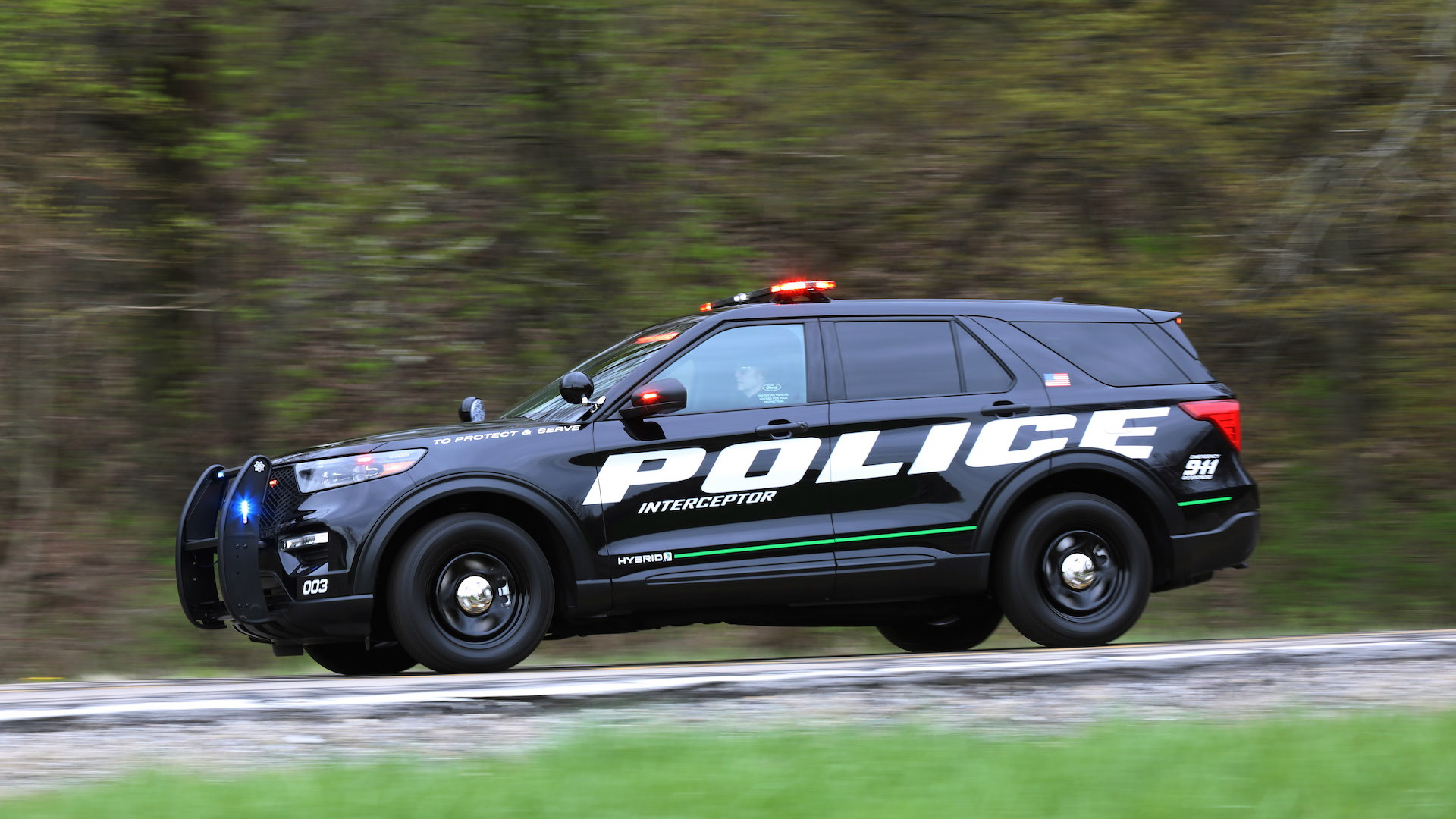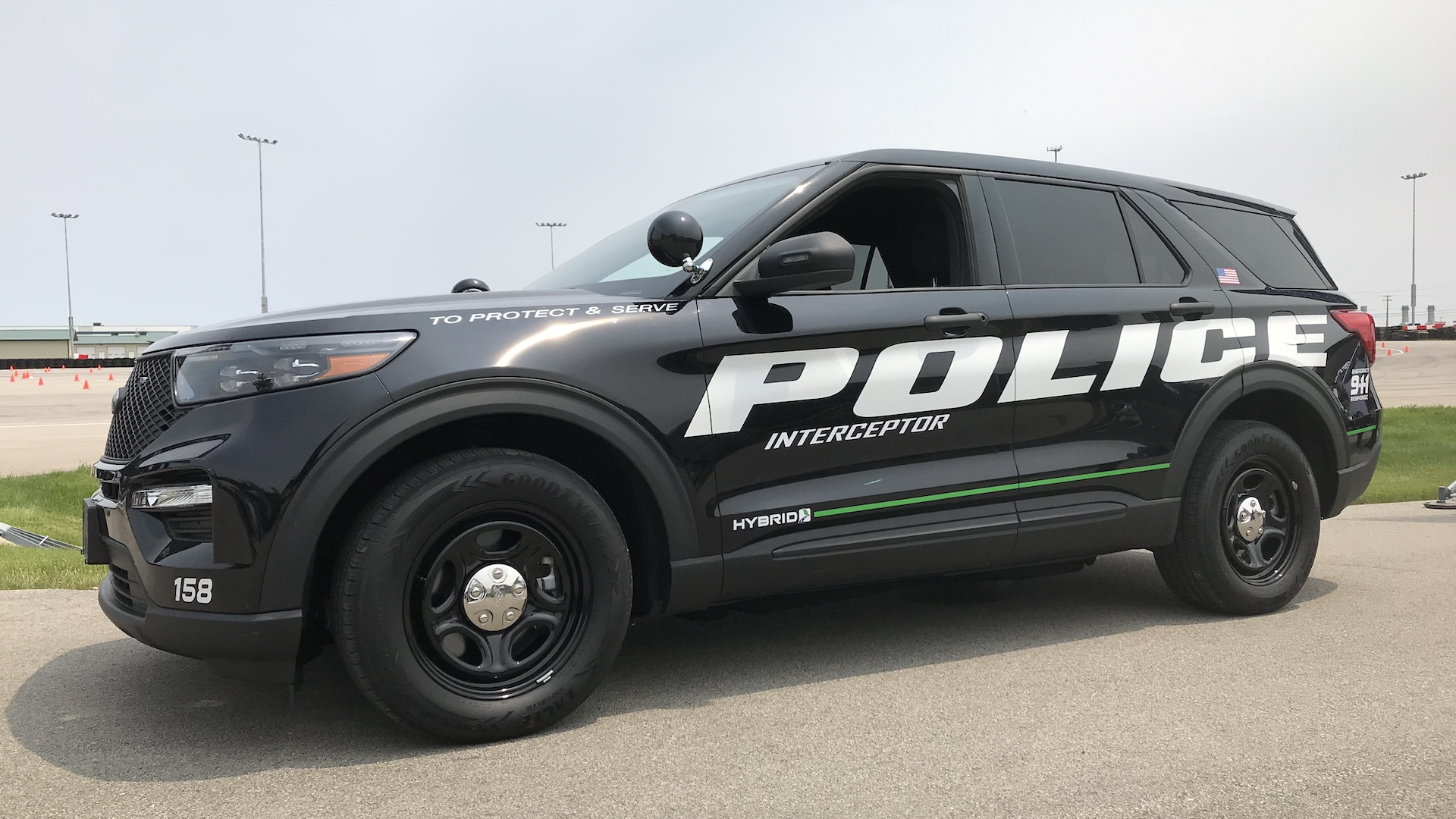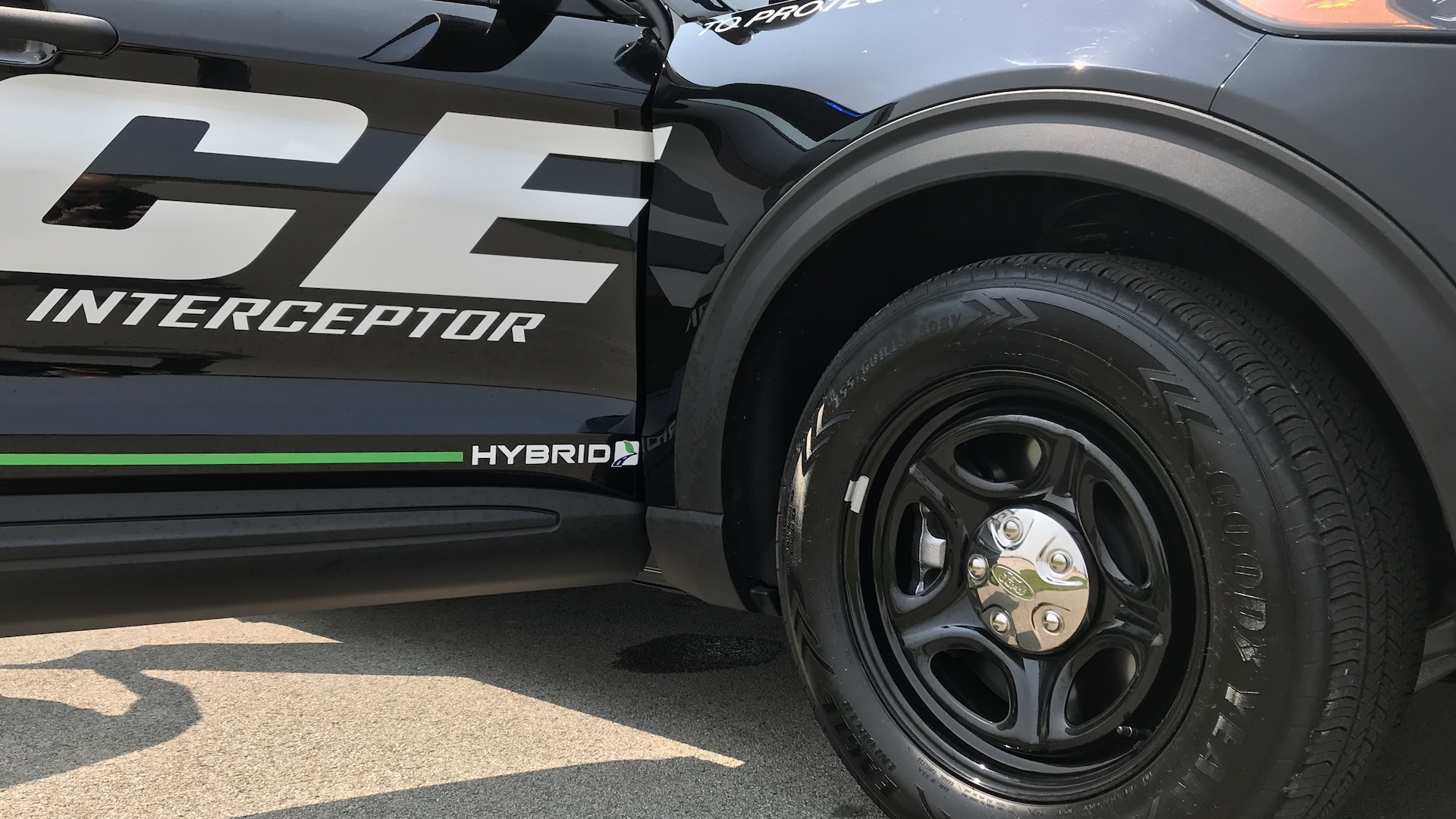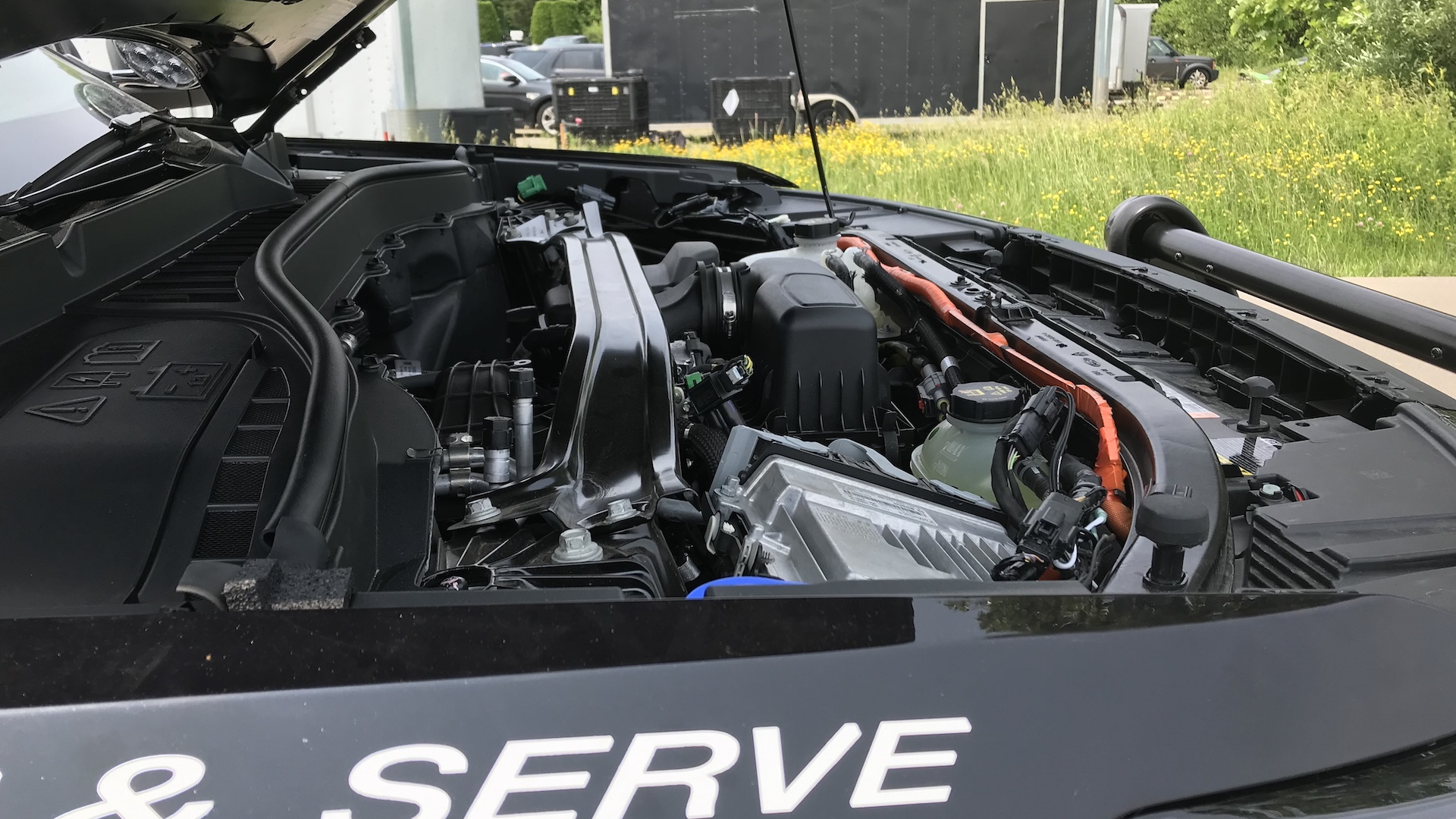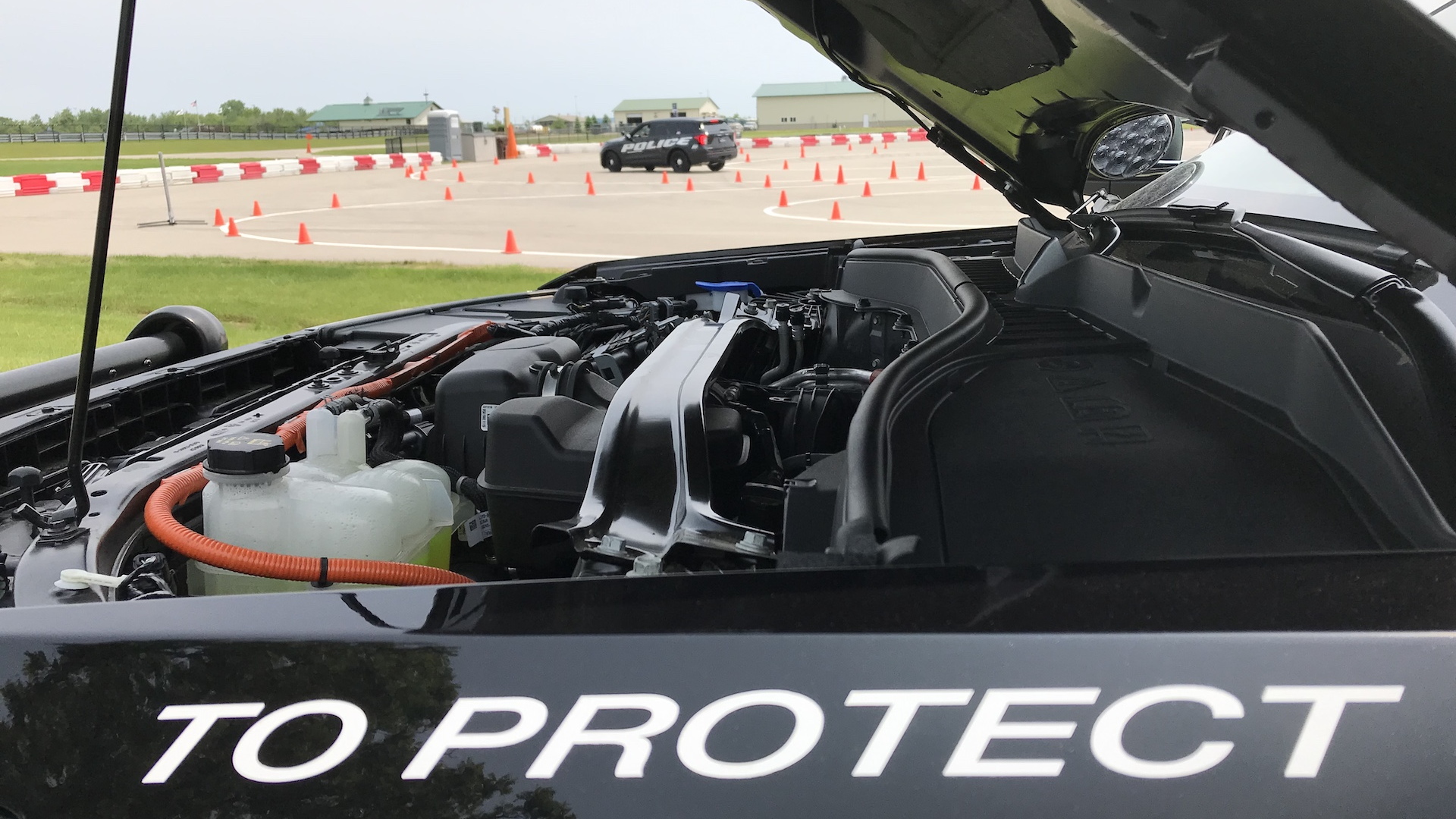The face of law enforcement will be greener this year. The Ford Police Interceptor Utility can be equipped with a hybrid powertrain that is at least 40 percent more fuel efficient than the outgoing model.
Based on the redesigned 2020 Ford Explorer and upfitted at Ford’s Chicago Assembly Plant, the hybrid Interceptor Utility with a 318-horsepower 3.3-liter hybrid V-6 has an EPA-estimated 24 mpg combined versus 17 mpg combined on the outgoing 305-horsepower 3.7-liter V-6 engine.
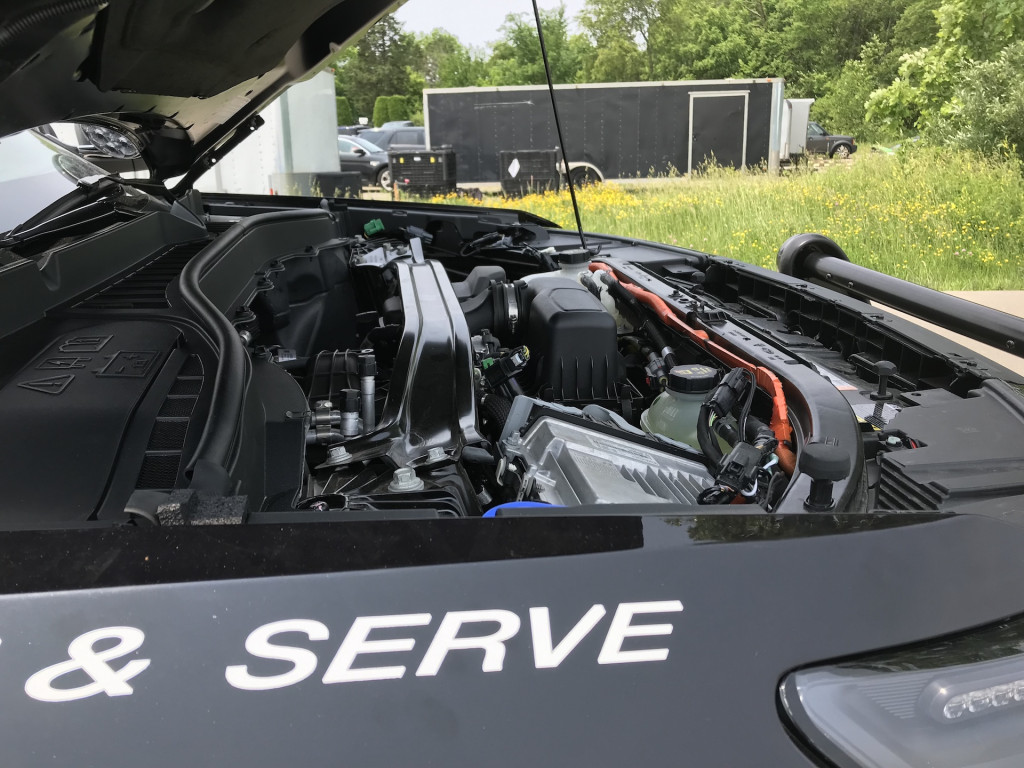
2020 Ford Interceptor Utility Hybrid
The Hybrid is also quicker and faster than the outgoing model as well as V-8 competitors tested by the Michigan State Police and Los Angeles County Sheriff’s Department.
Police officers at the Autobahn Country Club June 3 in Joliet, Illinois, reported mixed performance gains after two autocross laps at the facility.
“There is a little bit of performance gain (in the Hybrid) but it isn’t as significant as I thought it would be,” said Peru patrolman Nicholas Biagioni, who currently drives the old Utility in the rural Illinois Valley area. “There is a huge difference going from the standard model to the twin-turbo, though.”

2020 Ford Interceptor Utility Hybrid
The 400-horsepower 3.0-liter twin-turbo V-6 is the top offering, much like the ST variant will be for the Explorer due in dealer lots this summer. All three Interceptor engine offerings come with a 10-speed automatic transmission that send power to all-wheel drive. The Hybrid is standard, though a 285-horsepower 3.3-liter V-6 engine could be purchased for about $3,500 less. Although exact prices weren’t released, the Hybrid will cost about $3,500 more than the outgoing model.
It’s a magic number: Ford estimates owners will save $3,500 in annual fuel costs when driving 20,000 miles with gas at $2.75/gallon.
Police vehicles idle 4.9 hours per 8-hour shift and the engines must stay on to power radar, HVAC, lights, laptop, and other onboard equipment, according to Greg Ebel, assistant brand manager for Ford Police Vehicle Marketing.

2020 Ford Interceptor Utility Hybrid
“The Hybrid powertrain delivers improved performance and fuel-saving costs you couldn’t get with a mild hybrid,” Ebel said. A 48-volt battery system was skipped by Ford in favor of its hybrid setup for 2020.
The engine stays off until the lithium-ion battery pack located under the rear seat drops to about 30 percent power, then it kicks on again for a couple minutes to recharge the battery up to 80 percent. In motion, full battery power can propel the vehicle up to 35 mph, as long as you’re not hammering the throttle.
“You’re not driving at high speeds all the time in urban and suburban environments, so having hybrid technology and not consuming gas when idling for hours at a time, is smart,” said Lincolnwood chief of police Jay Parrott.
Parrott and other drivers were impressed with another crucial element of performance: braking.

2020 Ford Interceptor Utility Hybrid
“I’m extremely impressed with the Hybrid performance, especially the braking,” Parrott said.
The Utility hybrid equipment, including a motor mounted with the transmission, adds 300 pounds for an estimated curb weight of 5,300 pounds. Heavy, for sure, but that heaviness also includes 160 pounds of reinforcement in rear crash protection, which is an all too common and a fatal hazard for officers pulled over roadside. All police vehicles must meet a federal impact safety standard of 50 mph; Ford claims the Police Interceptor Utility is purpose-built to withstand a rear crash up to 75 mph.
Other equipment on the new Interceptor Utility includes automatic emergency braking, which can be shut off in the case of high-speed chases.
The Hybrid is also a smart play for fleets with a greener public image, such as in Peru, Illinois.

2020 Ford Interceptor Utility Hybrid
“Our city is big into the environment,” Biagioni said. “We have hydropower so anything we can do to help the environment we’re all for it.”
Ford estimates 1,276 gallons saved per year per vehicle based on 20,000 miles in its Interceptor Utility hybrid, or a reduction of 22,560 pounds of greenhouse gas-causing carbon dioxide emissions.
Officer safety and efficiency in doing the job is a key consideration in fleet purchases. But so is the use of tax revenue. An extended 8-year/100,000-mile warranty on all hybrid parts minimizes the risk of switching over.
“We want to make sure we’re making the best purchase of public dollars,” Parrott said.
